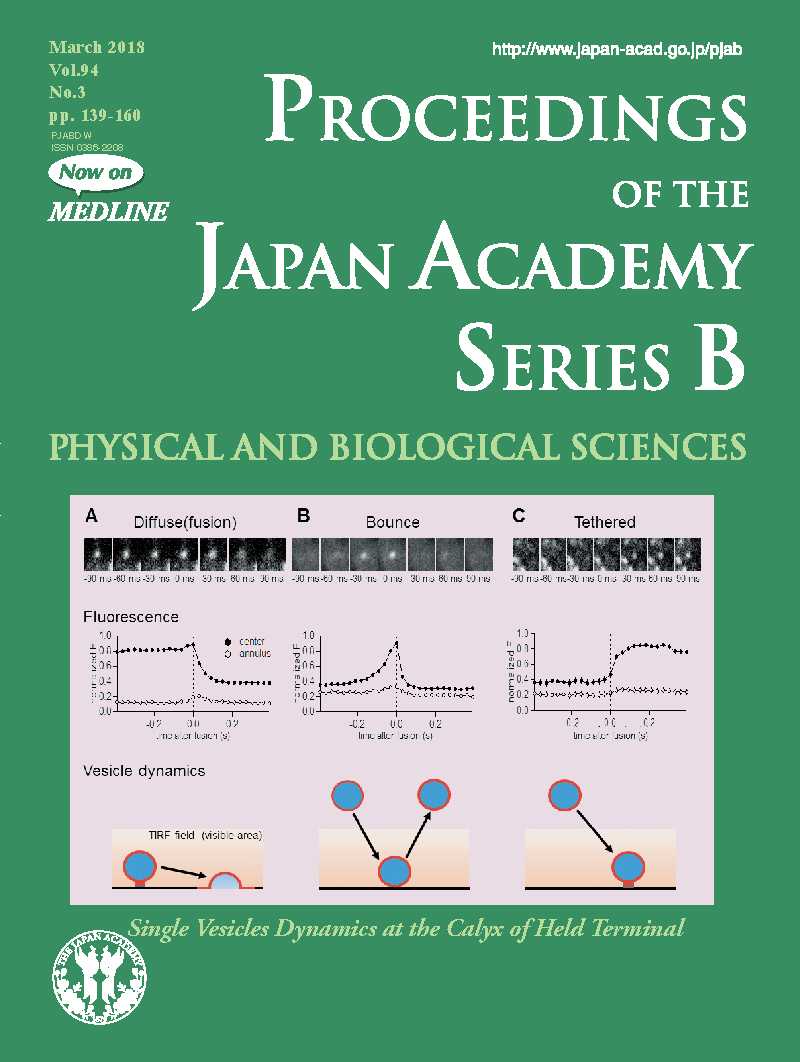
- |<
- <
- 1
- >
- >|
-
Takeshi SAKABA2018Volume 94Issue 3 Pages 139-152
Published: March 09, 2018
Released on J-STAGE: March 09, 2018
JOURNAL FREE ACCESS FULL-TEXT HTMLSynaptic contacts mediate information transfer between neurons. The calyx of Held, a large synapse in the mammalian auditory brainstem, has been used as a model system for the mechanism of transmitter release from the presynaptic terminal for the last 20 years. By applying simultaneous recordings from pre- and postsynaptic compartments, the calcium-dependence of the kinetics of transmitter release has been quantified. A single pool of readily releasable vesicles cannot explain the time course of release during repetitive activity. Rather, multiple pools of vesicles have to be postulated that are replenished with distinct kinetics after depletion. The physical identity of vesicle replenishment has been unknown. Recently, it has become possible to apply total internal reflection fluorescent microscopy to the calyx terminal. This technique allowed the visualization of the dynamics of individual synaptic vesicles. Rather than recruitment of vesicles to the transmitter release sites, priming of tethered vesicles in the total internal reflection fluorescent field limited the number of readily releasable vesicles during sustained activity.
View full abstractDownload PDF (3031K) Full view HTML -
Tsukasa SEYA, Yohei TAKEDA, Ken TAKASHIMA, Sumito YOSHIDA, Masahiro AZ ...2018Volume 94Issue 3 Pages 153-160
Published: March 09, 2018
Released on J-STAGE: March 09, 2018
JOURNAL FREE ACCESS FULL-TEXT HTMLThe immune system eliminates advanced cancer when treated with programmed cell death protein-1 (PD-1) or its ligand (PD-L1) blockade, but PD-1 therapy is effective in only ∼20% of patients with solid cancer. The PD-1 antibody mainly acts on the effector phase of cytotoxic T lymphocytes (CTLs) in tumors but induces no activation of the priming phase of antigen-presenting dendritic cells (DCs). It is reasonable that both DC-priming and PD-1/L1 blocking are mandatory for efficient CTL-mediated tumor cytolysis. For DC-priming, a therapeutic vaccine containing Toll-like receptor (TLR) agonists, namely a priming adjuvant, is a good candidate; however, a means for DC-targeting by TLR adjuvant therapy remains to be developed. TLR adjuvants usually harbor cytokine toxicity, which is a substantial barrier against drug approval. Here, we discuss the functional properties of current TLR adjuvants for cancer immunotherapy and introduce a TLR3-specific adjuvant (ARNAX) that barely induces cytokinemia in mouse models.
View full abstractDownload PDF (1455K) Full view HTML
- |<
- <
- 1
- >
- >|